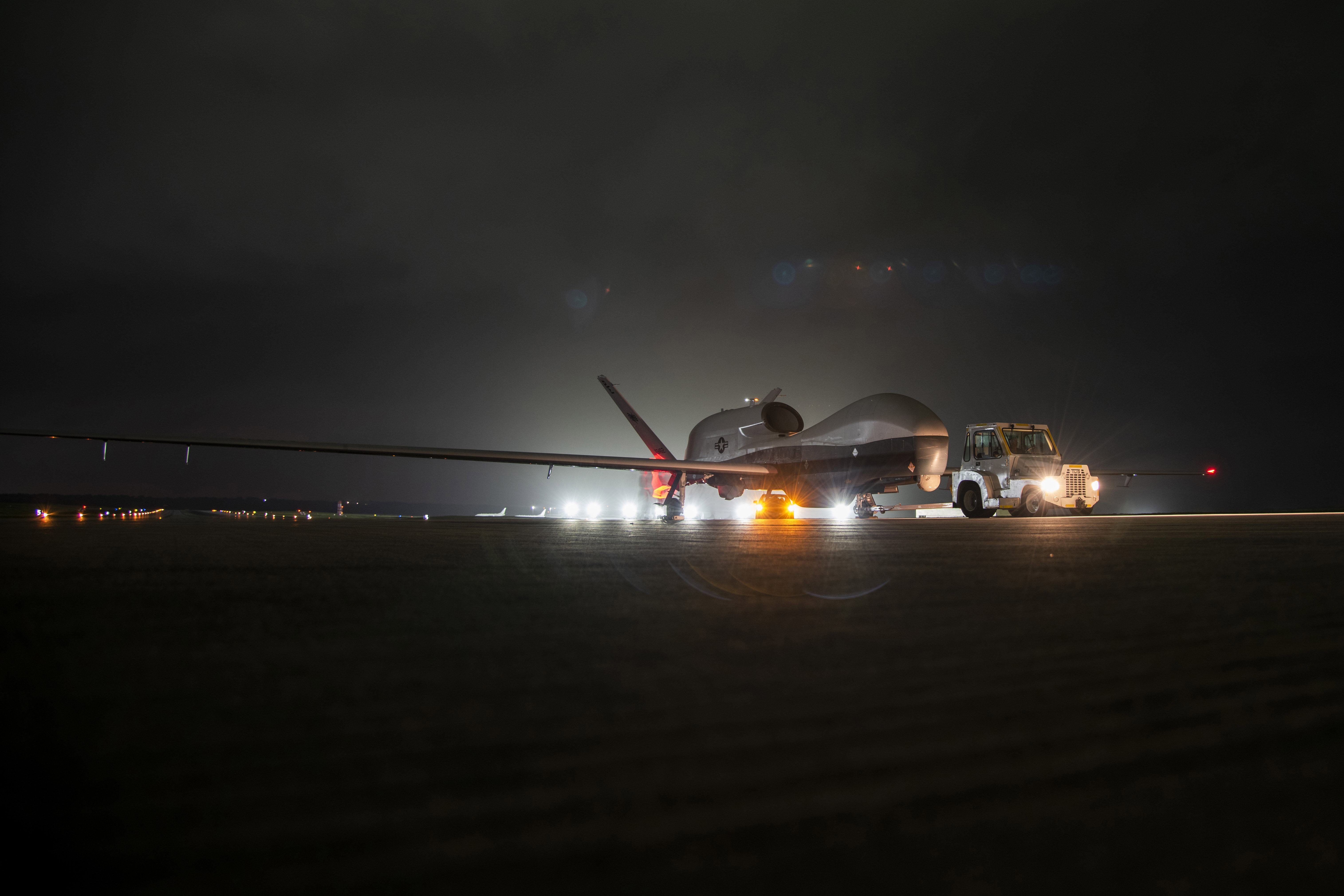
About a year later than initially expected, the first two MQ-4C Triton unmanned aircraft arrived in Guam over the weekend, marking a significant step toward increasing the Navy’s Western Pacific reconnaissance and surveillance capability, the service announced this weekend.
The two Tritons are part of an early operational capability being run by Unmanned Patrol Squadron (VUP) 19, which is flying and maintaining the aircraft from Andersen Air Force Base in Guam. VUP 19 is developing the concept for incorporating the high-altitude, long-endurance system into the maritime domain and augmenting the Navy’s current reconnaissance and surveillance operations with manned aircraft.
“The inaugural deployment of Triton UAS brings enhanced capabilities and a broad increase in maritime domain awareness to our forward fleet commanders,” Rear Adm. Peter Garvin, the commander of Patrol and Reconnaissance Group, said in a Navy statement.
“VUP-19, the Navy’s first dedicated UAS squadron supported by an outstanding NAVAIR (Naval Air Systems Command) and industry team, is superbly trained and ready to provide the persistent ISR coverage the Navy needs.”
The Navy expects initial operational capability (IOC) for the program in 2021. In December, the Navy awarded Northrop Grumman a $251.6-million contract modification to build three more low-rate initial production MQ-4 Tritons.
The Tritons are designed to combine a series of electro-optical sensors and radar to track maritime targets from as high as 60,000 feet over the ocean and compare tracks to automated identification systems (AIS) on ships, according to the Navy. The plan is for a Triton to relay the information back to a main operating base in the U.S. or to nearby P-8A Poseidon anti-submarine warfare manned aircraft.
The Tritons in Guam are operating under the under Commander of Task Force (CTF) 72, the lead for patrol, reconnaissance and surveillance forces in U.S. 7th Fleet.
“The introduction of MQ-4C Triton to the 7th Fleet area of operations expands the reach of the U.S. Navy’s maritime patrol and reconnaissance force in the Western Pacific,” Capt. Matt Rutherford, the commander of CTF-72, said in the statement.
“Coupling the capabilities of the MQ-4C with the proven performance of P-8, P-3 and EP-3 will enable improved maritime domain awareness in support of regional and national security objectives.”
The Navy had planned to deploy two Tritons to Guam by the end of 2018, Naval Air Systems Command announced in April 2018 at the Navy League’s Sea Air Space 2018 exposition.
However, in September 2018 a 131-foot wingspan Triton crashed in California while conducting operational testing out of Naval Base Ventura County. The Navy halted Triton operations while it investigated the crash.
The investigation found that the Triton had an issue during flight operations and was told by operators to come back to the base. While heading in for a landing, though, the engine was shut down but the landing gear did not extend, resulting in a belly landing. There were no injuries or collateral damage reported, but the damage to the Triton was estimated at more than $2 million, the threshold for a Class A flight mishap, according to the Navy.
The Navy and the aircraft manufacturer Northrop Grumman spent years testing and evaluating the Tritons before flying them to Guam.
“This significant milestone marks the culmination of years of hard work by the joint team to prepare Triton for overseas operations,” Capt. Dan Mackin, the manager of NAVAIR’s Persistent Maritime UAS program office, said in a statement. “The fielding of the Navy’s premier unmanned aircraft system and its additive, persistent, multi-sensor data collection and real-time dissemination capability will revolutionize the way maritime intelligence, surveillance and reconnaissance is performed.”





